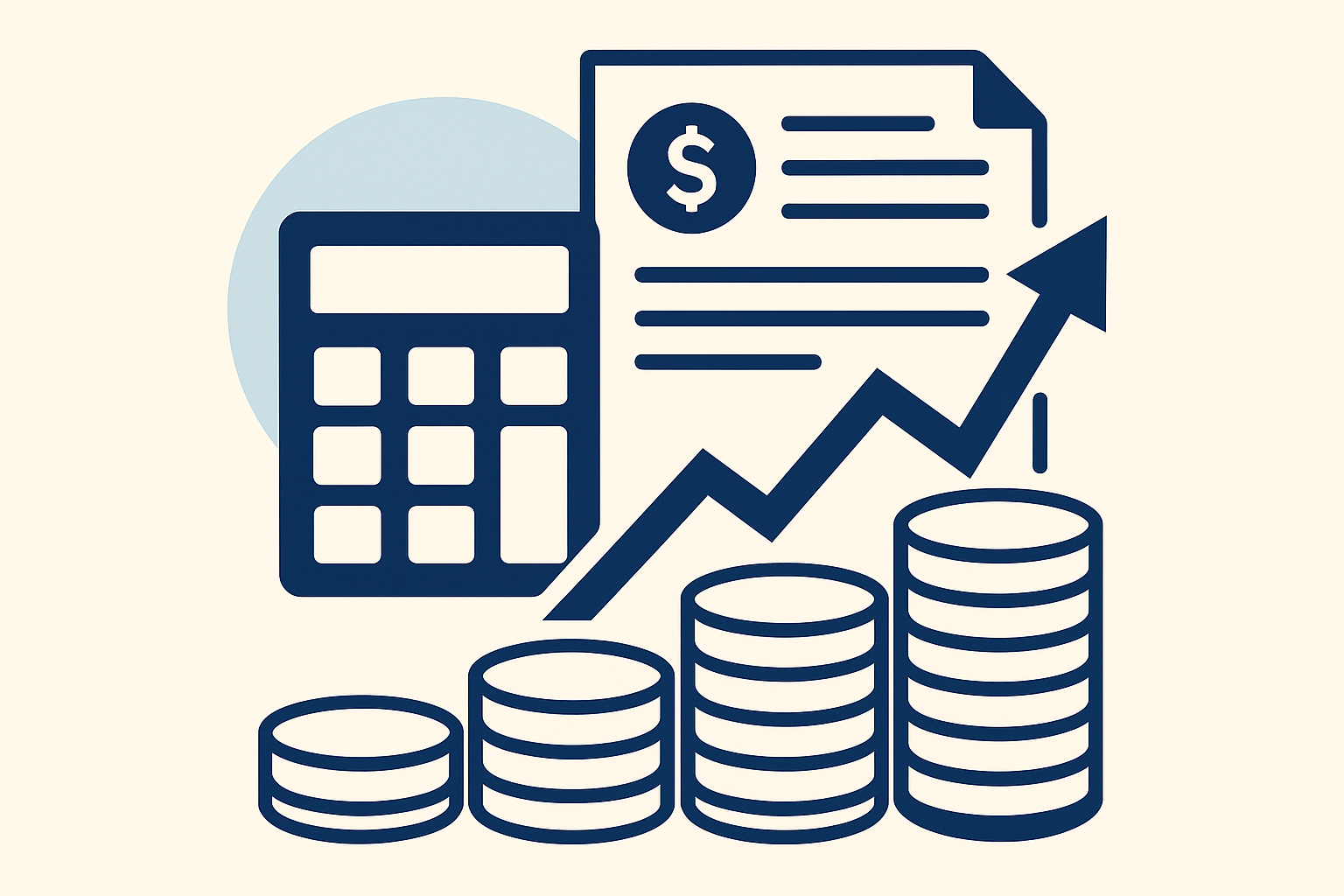Most business owners pay themselves last—and the IRS first.
That mindset, while common, is backward. If you want a business that’s not only sustainable but truly profitable, you need to flip the traditional accounting equation on its head.
Enter the Profit First framework—a cash flow management system designed to ensure your business is permanently profitable, not just paper-profitable.
But Profit First isn’t just a budgeting method—it’s a tactical advantage when applied to tax planning. When integrated properly, it helps you avoid end-of-year surprises, stay audit-ready, and reduce taxable income legally while preserving cash.
Here’s how small and midsize businesses can use Profit First principles to build smart, proactive tax strategies that support growth, not penalize it.
What Is Profit First (and Why It Works)?
The traditional formula for business finances is:
Revenue – Expenses = Profit
Profit First reverses that:
Revenue – Profit = Expenses
That simple shift forces you to treat profit like a non-negotiable cost, not a leftover. It creates clarity, forces constraint, and eliminates the “how much can we spend?” mentality.
In practice, Profit First uses a multiple-bank-account system to allocate funds into separate buckets:
- Income: All deposits land here first
- Profit: Your business’s bottom-line reward
- Owner’s Pay: What you earn for running the business
- Tax: Reserved for estimated quarterly taxes and year-end obligations
- Operating Expenses (OpEx): What’s left to run the business
When you separate money by function, you make smarter, cleaner decisions—especially when it comes to tax liability and cash flow control.
Why SMBs Struggle With Taxes (and How Profit First Fixes It)
Here’s what happens in most small businesses:
- Money comes in.
- It’s spent as needed.
- Taxes are calculated at year-end.
- Owners panic and scramble to find the funds.
Sound familiar?
The problem isn’t lack of revenue—it’s lack of systemic allocation. The Profit First method solves this by automating tax savings and structuring your financial decision-making.
When a percentage of every dollar is set aside for taxes in real time, surprises vanish. And when profit and owner pay are prioritized, your business becomes an asset—not just a job.
Setting Up Profit First for Tax Strategy
Here’s how to apply Profit First directly to your tax planning, with specific steps:
1. Open a Dedicated Tax Bank Account
This is non-negotiable. Your tax account should be:
- Separate from OpEx and income
- With a bank that allows auto-transfers or rules-based movement
- Used exclusively for tax obligations (federal, state, self-employment, payroll)
Keep your tax cash off-limits—mentally and practically.
2. Determine Your Allocation Percentages
Start with baseline allocations based on your business revenue (these are sample ranges):
| Revenue Range | Profit | Owner’s Pay | Tax | OpEx |
|---|---|---|---|---|
| $0–250k | 5% | 50% | 15% | 30% |
| $250k–500k | 10% | 35% | 15% | 40% |
| $500k–1M | 15% | 30% | 15% | 40% |
Your actual tax percentage will vary depending on state, entity structure, and deductions. If you’re unsure, aim for 15–20%, then adjust based on CPA guidance.
3. Automate Allocations on a Consistent Schedule
Twice a month (or weekly, if your cash flow is high-frequency), allocate all income based on your defined percentages. This creates real-time reserves for:
- Quarterly estimated taxes (QETs)
- Payroll taxes
- Year-end income tax obligations
This prevents lump-sum shocks and ensures that tax money is never confused as available cash.
Smart Tax Moves Within the Profit First Framework
Once you’ve systematized your allocations, you can add more strategic layers. Here’s how to optimize further using Profit First as the foundation:
1. Leverage Accelerated Deductions Strategically
If your tax reserve account has surplus funds near year-end (and you’ve met all liability projections), consider prepaying qualified business expenses:
- Software subscriptions (annual licenses)
- Professional services
- Equipment under Section 179
This can reduce taxable income while maintaining Profit First discipline—only use surplus, never dip into your core tax reserve.
2. Use Owner’s Pay to Maximize Retirement Contributions
Since Profit First includes a dedicated Owner’s Pay account, you can use that income to fund retirement vehicles like:
- SEP-IRA (up to 25% of compensation or $66,000 for 2023)
- Solo 401(k)
- Traditional IRA/Roth IRA (depending on income limits)
This allows you to reduce personal tax liability while still “paying yourself first.”
3. Create a Buffer in Your Tax Account
Set your tax account to allocate a few percentage points more than required. For example, if your projected tax rate is 15%, allocate 17–18%. This creates:
- A cash buffer for unexpected liabilities
- Flexibility to absorb rate increases or reclassifications
- Extra peace of mind
Overfunded tax accounts can later be rolled into year-end bonuses or strategic investments once taxes are filed.
4. Ensure Entity Structure Aligns With Profit Goals
Profit First works best when your business structure is tax-efficient. If you’re still operating as a sole proprietorship or single-member LLC, speak to your CPA about:
- S-Corp election (to split salary and distributions)
- Holding company structures for multi-entity operations
- Quarterly draws vs. salary
Smart structuring can reduce self-employment taxes, increase owner pay, and allow better use of Profit First buckets.
5. Layer in Bookkeeping Automation for Visibility
Use tools like:
- Relay Bank or Novo for Profit First-friendly banking (automated transfers, account buckets)
- Xero, QuickBooks Online, or Bench for real-time bookkeeping
- Fathom or LivePlan for KPI dashboards tied to Profit First metrics
Visibility is power. When you can see allocations, income, and liabilities in one place, tax season becomes a simple checklist—not a stressful mystery.
End-of-Year Profit First Tax Checklist
Use this as a quick review each December:
✅ Review tax reserve vs. actual liability with your CPA
✅ Prepay deductible expenses if appropriate
✅ Fund SEP-IRA or Solo 401(k) from Owner’s Pay
✅ Re-evaluate allocation percentages for the upcoming year
✅ Confirm estimated payments are complete
✅ Clear surplus tax reserves into profit or reinvestment
✅ Book year-end tax meeting before Q1 begins
How This Helps You Grow
Profit First isn’t just about paying yourself more—it’s about creating financial agility. When taxes are handled proactively, you unlock:
- Fewer surprises
- Smarter decision-making
- Easier access to capital (due to cleaner books)
- Increased owner confidence
- Long-term, scalable profitability
The ultimate goal is not just lower taxes—it’s total financial control.
Your business should serve you, not the other way around.
Profit First tax strategy turns cash flow into a system—and turns that system into a safety net, growth engine, and stress reducer all in one.
Taxes will always be a reality. But when you control your allocations, optimize your deductions, and manage proactively, taxes stop being a burden and start becoming a tool.
Disclaimer: This article is for informational purposes only and does not constitute financial, tax, or legal advice. Always consult with a licensed CPA or tax advisor to determine what strategies are appropriate for your specific business and jurisdiction





